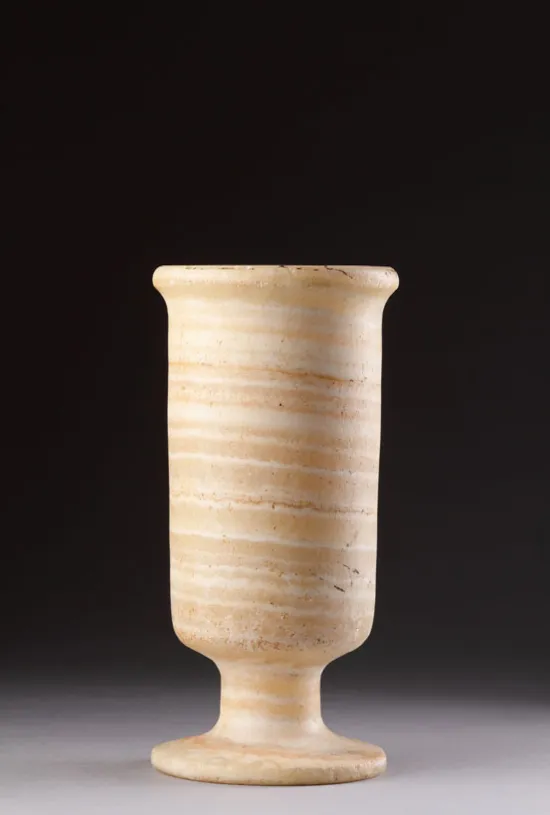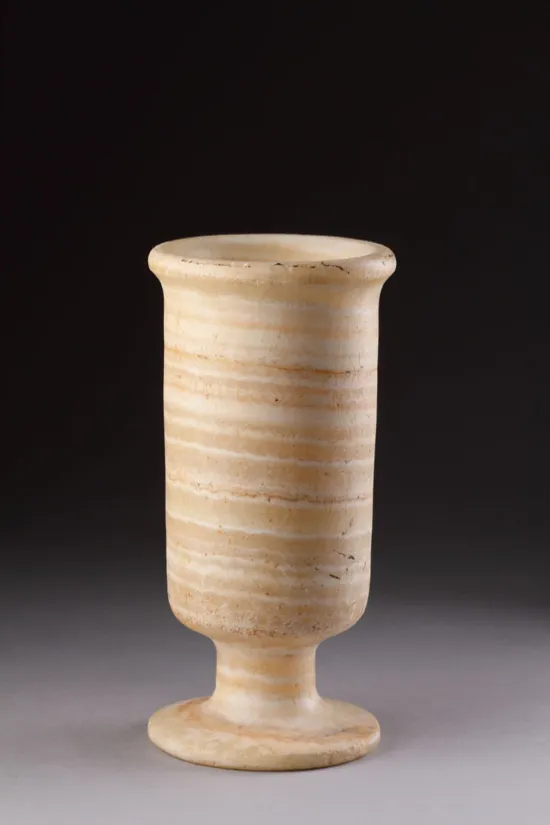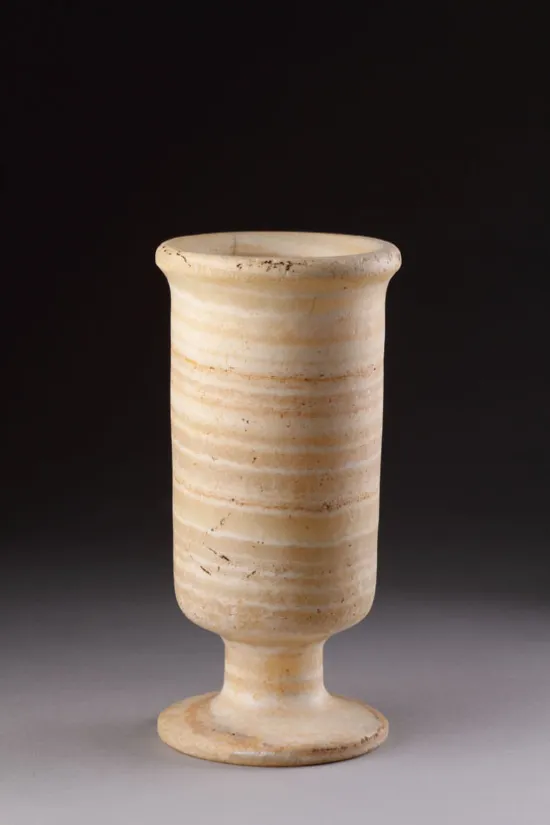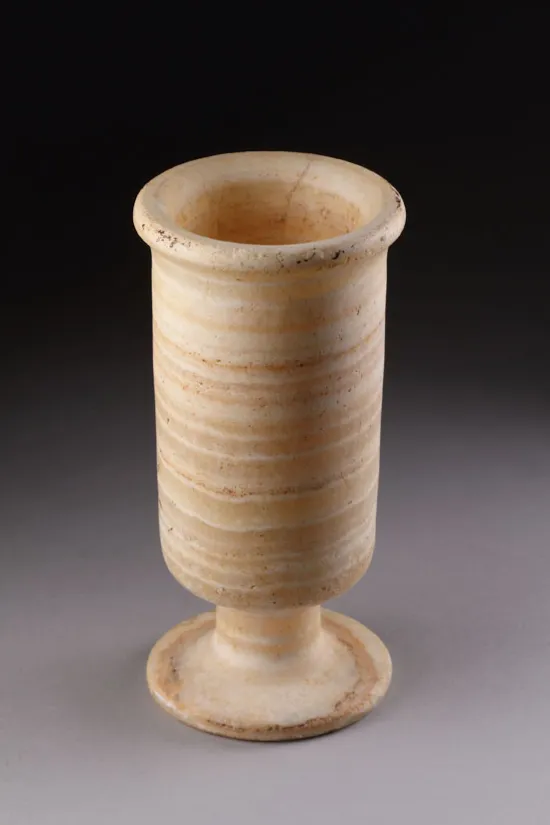Ancient Romano-Egyptian Banded Alabaster Funerary Jar of Cylindrical Form
An Ancient Romano-Egyptian Banded Alabaster Funerary Jar of Cylindrical Form with Everted Rim on a Waisted Stem and Circular Spreading Base
With an old paper label inscribed ‘Do Not Touch 4000 Years Old ! (Touna Egypt)’
Good condition tiny surface chips to rim old hairline crack to neck
Roman Period 1st - 2nd Century A.D
Size: 20.5cm high, 10cm dia. - 8 ins high, 4 ins dia.
With an old paper label inscribed ‘Do Not Touch 4000 Years Old ! (Touna Egypt)’
Good condition tiny surface chips to rim old hairline crack to neck
Roman Period 1st - 2nd Century A.D
Size: 20.5cm high, 10cm dia. - 8 ins high, 4 ins dia.
The ancient site of Tuna el Gebel (Touna) lies to the west of Hermopolis Magna and is composed of three sections: a Graeco-Roman necropolis, the sacred animal catacombs and temple of Thoth to the South and a 6th century A.D settlement to the North, with cemeteries of various dates. There are surviving remains of the buildings constructed to accommodate the numerous ancient pilgrims visiting the site. As it was of importance it attracted private burials including about sixty brick built funerary houses and nine limestone tomb chapels, many of Ptolemaic and Roman date. The names of some of the owners of these ‘funerary houses’ and tomb chapels are known including Isadora (circa A.D 150), a woman who is said to have drowned in the Nile and subsequently became the object of a popular cult. The private tomb of the chief priest of Thoth called Petosiris (circa 300 B.C) is regarded as the most important because of its decoration which is an unusual combination of Egyptian and Hellenistic styles.
The ancient site of Tuna el Gebel (Touna) lies to the west of Hermopolis Magna and is composed of three sections: a Graeco-Roman necropolis, the sacred animal catacombs and temple of Thoth to the South and a 6th century A.D settlement to the North, with cemeteries of various dates. There are surviving remains of the buildings constructed to accommodate the numerous ancient pilgrims visiting the site. As it was of importance it attracted private burials including about sixty brick built funerary houses and nine limestone tomb chapels, many of Ptolemaic and Roman date. The names of some of the owners of these ‘funerary houses’ and tomb chapels are known including Isadora (circa A.D 150), a woman who is said to have drowned in the Nile and subsequently became the object of a popular cult. The private tomb of the chief priest of Thoth called Petosiris (circa 300 B.C) is regarded as the most important because of its decoration which is an unusual combination of Egyptian and Hellenistic styles.
Ancient Romano-Egyptian Banded Alabaster Funerary Jar of Cylindrical Form









YOU MAY ALSO LIKE



